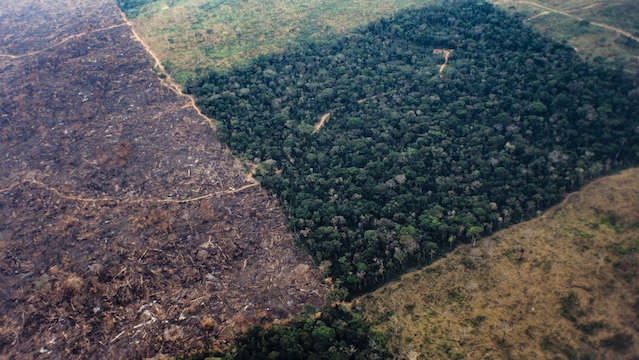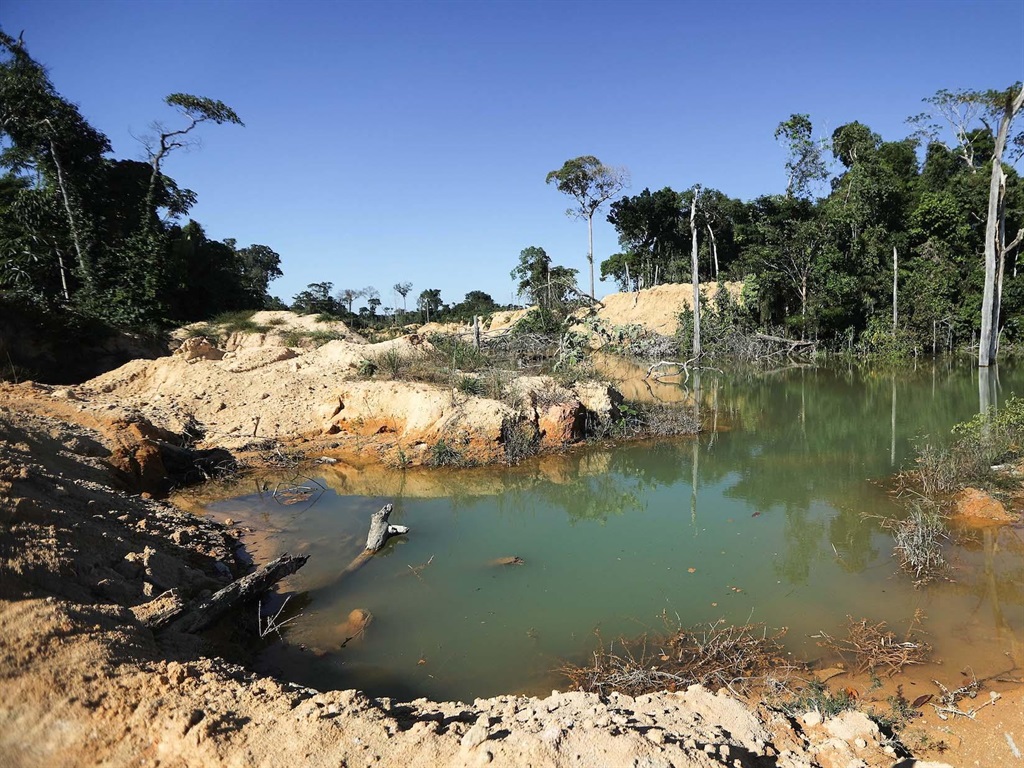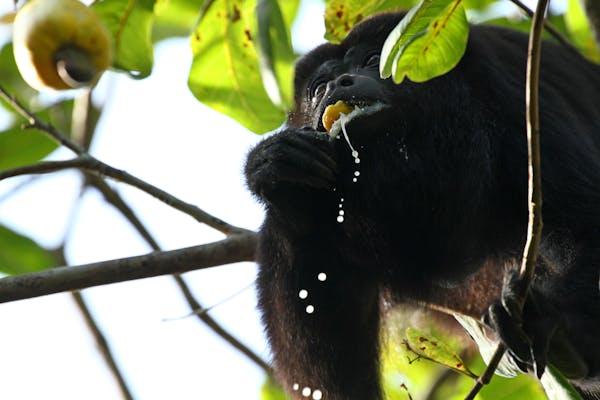OUR BURNING PLANET
The way of the white lion: Sacred sites as shock therapy for the broken natural world
By Kevin Bloom• 23 August 2019
The world’s leading natural and climate scientists, in reports that are dropping at the rate of two a month, are telling us to look to indigenous wisdom if we want to leave our children an inhabitable planet. But what do these scientists mean? An international gathering in the Timbavati white lion reserve, framed around the indigenous concept of sacred sites, has unearthed what ecologists, lawyers and activists think could well be an answer.
I. Vusamazulu
“If you can visualise hell on earth,” said the indigenous healer in the black and red cloth, “that is what our governing structures have created with the king of all animals.”
The healer’s name was Linda Tucker, CEO and founder of the Global White Lion Protection Trust, and it was generally accepted that she had received her calling back in November 1991, when she was rescued from a pride of lions by a Shangaan medicine woman known as “the Lion Queen of Timbavati”. The near-death experience, recounted in her book Mystery of the White Lions, had prompted Tucker to return to Timbavati to be initiated into a tradition that was a universe removed from the marketing and fashion circles in which she had already made a name. Now, almost 30 years later, she was here — convening an international gathering of scientists, activists, healers, indigenous leaders and human rights lawyers to address the related crises of social injustice and collapse of the natural world.
Among the groupings that were supporting the conference were the Kogi of the Sierra Nevada mountains in Colombia, who had lived in seclusion since the Spanish conquests of the 1500s, emerging in the 1990s to appear in a celebrated BBC documentary that warned industrialised society of the potentially disastrous consequences of its extractive ways. A key figure that hung over the conference was Polly Higgins, a Scottish barrister who — until her death in April 2019 — had campaigned to have ecocide recognised by the International Criminal Court. In all, the gathering was a coming together of the deeply esoteric and the demonstrably concrete, a merging of ancient and modern, unknown and known, in service of a planet on life support.
For Tucker, the esoteric part was anchored in the visions and prophecies of Baba Credo Vusamazulu Mutwa, the great wisdom keeper of Africa and her former instructor, who’d taught her that the Timbavati region on the western border of the Kruger National Park had been acknowledged as a sacred site long before the latter had been declared a reserve for wildlife in 1926. Mutwa’s teaching, backed up by indigenous members of the local Tsonga and Sepedi communities, was that the white lions were a divine species, their presence a harbinger of the time when humanity would either bow to the primacy of nature or go extinct. On the day that the last of Timbavati’s white lions was shot, or so the prophecy went, the fate of humanity would be sealed.
The part of science was contained in the fact that Timbavati’s white lions, like all remaining lions of the region, were integral to the Kruger-to-Canyons Biosphere, the third-largest biosphere reserve in the world. Jason Turner, a specialist lion ecologist, would explain to the gathering how the lions of Timbavati exerted their influence through a scientific discovery known as “trophic cascading,” a process whereby each subordinate layer of the ecosystem benefited from the presence of the capstone animal. According to Turner, the classic example was the North American wolf, which after its reintroduction to Yellowstone National Park in 1995 had restored the entire ecosystem, down to the path and flow of the rivers.
Yet in South Africa, even though the full effect on the biosphere had yet to be worked out, the authorities were wilfully oblivious to the lion’s place and role.
“The only value that government is seeing for these lions is as skeletons for the lion bone trade,” said Tucker. “The same lions that were hugged as babies by tourists are the ones that are being sent to slaughterhouses, having been starved to death.”
By way of hard data on this slaughter, Turner would reference the nexus between the 300 or so captive breeding operations in South Africa and the country’s standing as the largest legal exporter of lion bones and skeletons in the world — a scenario that had resulted in the issuing of upwards of 5,300 export permits between 2008 and 2015, 98% of which were for Laos and Vietnam. The global population of wild lion, which had vanished from 95% of its historic range, plummeting from 200,000 in the early twentieth century to somewhere around 20,000 in 2018, now faced this new threat too. Where the demand for tiger bone had contributed to the decimation of wild tiger populations in Asia, the new fear of conservationists was that its replacement in the market by lion bone would (along with further habitat loss and trophy hunting) drive the African cats to extinction by 2050.
What’s more, there was zero evidence, according to Tucker and Turner, that the revenues generated from canned hunting and the lion bone trade would work to preserve the species. As for the white lion, while there were hundreds in captivity, there were less than 13 individuals left in the Timbavati wilds, their only natural home. Which all explained why, in her presentations to Parliament of August 2018 and February 2019, addressing a controversial hunting and benefit-sharing agreement between the Kruger National Park and the adjacent private reserves, Tucker spoke for the indigenous view.
https://youtu.be/X7Xgg20BGpI
“Today we propose that the solution requires important and radical shifts toward a new pioneering conservation model,” she said, “which is ultimately more African, as well as being more international.”
What she meant by that was articulated in the statement of the National Khoisan Council for Parliamentary Inquiry, a cry that echoed the pain of indigenous communities all the way from the vanishing rainforests of South America to the thawing tundra of the Arctic north:
You speak of stakeholders in the new Kruger deal.
Who are these so-called stakeholders?
Have the First Nations been consulted?
Have the animals been asked?
Have the plants, the rivers, the earth given their consent?
Has the lion, king and primary stakeholder in service to all creation, given authorisation for this new Kruger deal?
We have already said in Parliament:
If you kill the lion, you kill the Bushman people.’
And now let it be recorded:
‘If you kill the white lion, you kill South Africa.’
II. Mupo
Like Tucker, before speaking as anything else, Mpatheleni Makaulule spoke as a healer, a human being in service of her ancestors, her people, the rains and the soil. As a young girl, the eleventh of 24 children, she was given the name “Pangami,” which refers to the work of the shepherd, or the one who “leads from behind”. Makaulule was also a “Makhadzi,” the highest of Venda healers, a tradition linked to Modjadji the Rain Queen and the deepest mysteries of Venda lore.
On the second night of the conference, before she was due to present, Makaulule stayed up well past midnight, writing down her teachings with the help of Dr Moshudu Dima, a colleague and elder who looked much younger than his 80 years.
Because the wisdom carried by Makaulule and Dima had never been the wisdom of books, to see it freshly written down was — for almost all of the delegates — to see a whole new version of truth.
“We cannot understand sacred sites if we do not understand the word ‘Mupo’,” Makaulule began, reading from the text on the screen. “Our ancestors called the origin of creation ‘Mupo’. When we look at the sky, we see Mupo. When we look at nature, we see Mupo. Mupo means all that is not man-made. For us, the Venda people, our life is connected with Mupo. Our ancestors are Mupo, this is where the spirit goes back to after death. Our sacred sites, called ‘zwifho,’ are where Mupo lives.”
While she may have been preaching to the converted, Makaulule wanted to stress that a person could not separate herself or himself from “vhadzimu,” the ancestor spirits. She spoke about how most people nowadays, when talking to “vhadzimu” in “zwifho,” did so in hiding, visiting the sacred sites after dark.
“Why should people be afraid of other people?” she asked.
But she had a more fundamental question.
“There’s nobody that goes to a church and desecrates the altar,” she said, “so why do people come to our temples, our ‘zwifhos,’ and build houses?”
Here, Makaulule was referring directly to the Phiphidi Falls, above which chalets had been built and concerning which an entrance fee of R20 had recently granted access to the general public. Makaulule’s position was that sacred sites were desecrated when they were commercialised in any way. They were desecrated, she said, when their animals, plants, waters and minerals were removed, exploited, polluted or otherwise damaged, a law that applied in extra measure to the sacred animals and totems.
For this reason, the Ramunangi clan, traditional custodians of the Phiphidi Falls and the spirits that dwelt in its waters, no longer came to perform the rituals. It was said even the mythical lion, Guvhuguvhu, no longer roared.
And it wasn’t just the site of the falls that held the desecration — located near the source of the Mutshindudi River, trash from the chalets and the unending influx of tourists had polluted the ecosystem downstream.
“These are places of critical ecological significance,” said Makaulule, emphasising once again that the “zwifhos” had been chosen by nature, not man. “For example, forests in watershed areas which assist the climatic cycle, springs or rivers which provide water for the whole ecosystem, lakes which maintain the water table.”
Then she added: “‘Zwifhos’ should not be disturbed by any human interference, there must be no activities other than those directed by the Makhadzis.”
An injunction, it appeared, that was at the core of the sacred site concept. If the “zwifhos” were going to protect and regenerate the ecosystem, it was essential that they be left undisturbed. In Venda tradition, it was only the clan members associated with a specific site that were allowed to visit, and then only on specific dates for specific purposes. Almost always, these dates and purposes aligned with the cause of renewal itself; almost never did people come to just sit and look.
In Venda even today, insisted Dima, the spirits were exacting a price from the local tourists. If not so much at Phiphidi Falls, he said, where the energies had been mostly depleted, then at power sites like Thathe Vondo Forest, protected by a half-man half-lion creature known as “Nethane,” and at Lake Fundudzi, protected by a giant python god.
Given that these forces had kept almost everyone but the authorised clan members out of the sacred sites, and had thus safeguarded their attendant ecosystems, the scorn of the Westernised mind was of little significance. But the Westernised mind, according to Makaulule, was encroaching — which was why activism was becoming ever more urgent.
As the founder and leader of an organisation called “Dzomo la Mupo,” which means “to speak for the natural world,” the protection of sacred sites was now Makaulule’s full-time job. And her job description was in full view on the homepage of the website, where the organisation provided its raison d’etre:
“Massive destruction of forests along the rivers and in the mountains of the Vhembe district of South Africa… has already caused great losses in healthy food sovereignty, where many communities in the area harvest from the wild for their survival. Dzomo la Mupo is working to alleviate this environmental degradation.”
Alleviate how?
Under Makaulule’s guidance, the organisation had taken custodianship of 11 sacred sites. As a Makhadzi, she was in a perfect position to direct the clans in the old ways. But there were now also 25 schools and 15 communities under her aegis, which were receiving training in cultural biodiversity and indigenous living, as well as regular hand-outs of seeds.
III. Npenvu
In early May 2019, as Daily Maverick reported, the Intergovernmental Science-Policy Platform on Biodiversity and Ecosystem Services, or IPBES, released what George Monbiot called “the biggest and worst news humanity has ever received”. The natural world, we learnt, was in the middle of an unprecedented crisis, with extinction rates tens to hundreds of times higher than they had been in the past 10 million years. Prepared by 145 leading experts from 50 countries, the 40-page summary for policymakers mentioned the phrase “indigenous” 32 times.
The instruction from the scientists was clear — to get through the mess that Western civilisation and its energy, transport and farming industries had created, indigenous wisdom was key. And so Daily Maverick’s report on the IPBES assessment was framed around the teachings of a !Xo healer named Kummt’sa, who we visited in the Kalahari, and who also happened to be at the conference in Timbavati.
“There’s no left or right,” Kummt’sa would say, when the discussion veered towards the political. “There’s only underground.”
Which was profoundly true as far as it went, but didn’t help with the broken political system on its own obstinate terms. For this, there was Pooven Moodley, executive director of the pan-African indigenous rights group Natural Justice. As a lawyer with a background in anti-apartheid student activism, Moodley was able to track the juncture between social justice and environmental justice in local and international law.
He spoke about his work with indigenous communities in the Lamu archipelago in Kenya, where “massive desecration of sacred sites” was occurring in terms of dredging of the ocean, killing of the mangroves and expulsion of the farmers and fisherfolk.
“A complete onslaught,” he said, “which is kind of typical of the development happening on this continent.”
But a victory had been won by thinking holistically and longer term, with the focus on protecting natural resources and choosing the legal battles wisely. In June 2019, said Moodley, Beijing’s plan to build a coal plant had been stopped by the Kenyan courts, which “created ripple effects all the way to China” with the banks taking a hit.
Although the war wasn’t over, the victory underscored in Moodley’s view the strength of indigenous communities when standing up to global superpowers or their own intransigent governments. Aside from the local example of Xolobeni, which Moodley agreed was South Africa’s “Standing Rock,” he also provided the example of the Enderois in Kenya, who in 1974 were forced from their ancestral lands to make way for a game park — in 2010, after the case was taken to the African Commission on Human and Peoples Rights, a ruling was passed that the Kenyan government had violated the rights of the Enderois to religious practice, to property, to culture and to the free disposition of natural resources.
The Holy Grail, though, was the granting of juristic personhood to these resources, as had happened in New Zealand in 2017, when a Maori tribe, after 140 years of negotiation, had won recognition for the Whanganui River, which henceforth would be treated as a living entity.
In South Africa, although it seemed that such a thing was still aeons off, a judgment had just been passed that fed the delegates at the sacred site conference with a morsel of hope. On 6 August 2019, in a matter where the National Council of the Prevention of Cruelty to Animals was the applicant and the Department of Environmental Affairs was the first respondent, the North Gauteng High Court ruled that the government’s decision to set quotas for the export of lion bone was “unlawful and constitutionally invalid”.
As Judge Kollapen wrote in the judgment: “[It] is inconceivable that the State Respondents could have ignored welfare considerations of lions in captivity in setting the annual export quota.”
In other words, the lion slaughterhouses were just that — a place where the felt lives of animals, despite Section 24 of the Constitution, were completely ignored by the State.
It was, of course, a long way from the Kollapen judgment to the juristic recognition of sacred sites, but the tide of history was turning. The four-aspect beast of truth, which Baba Credo Mutwa called “Npenvu,” was already flying.
“Mutwa told me that truth was as mighty as a lion, and as brave as an eagle,” Linda Tucker wrote in Mystery of the White Lions. “When I inquired why this entity should have a serpent’s tail, he told me that truth also bit — like a mamba.” 4
The final aspect, needless to say, was the human — which held the quality of free will. DM







